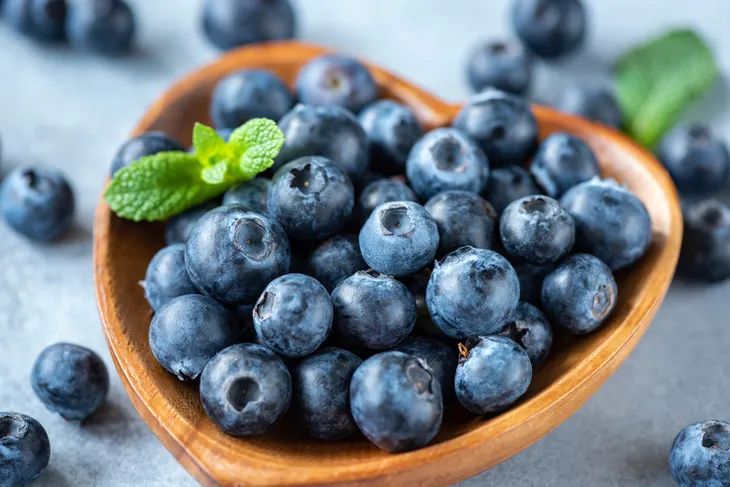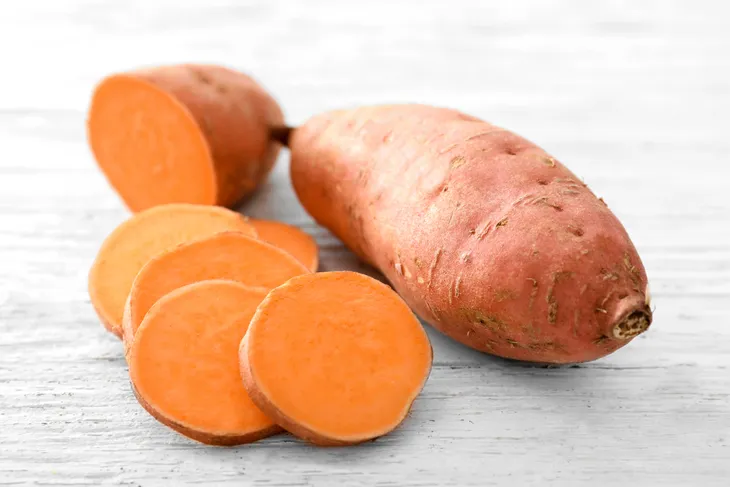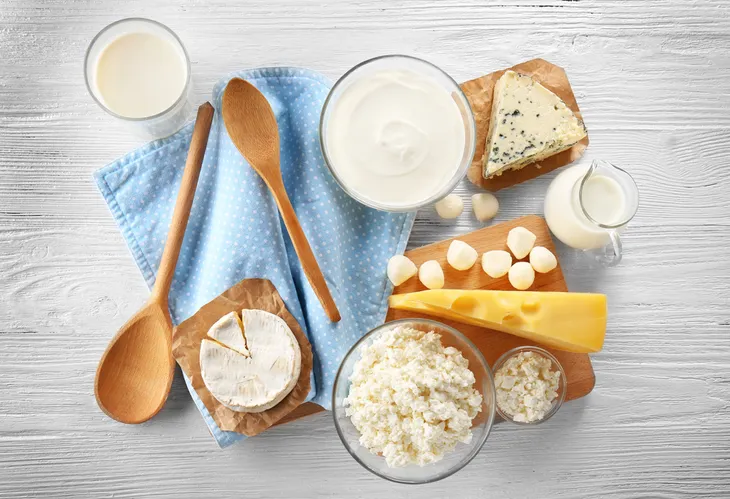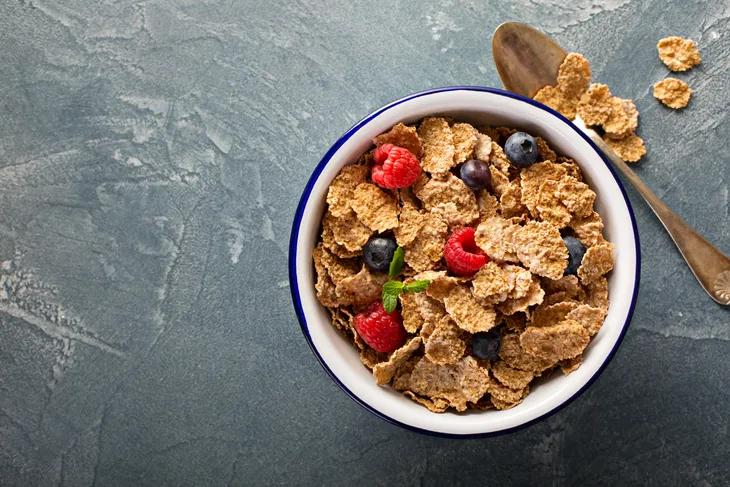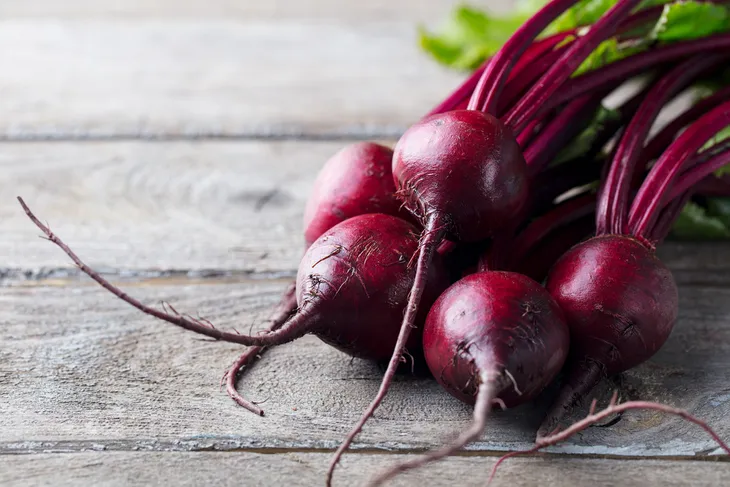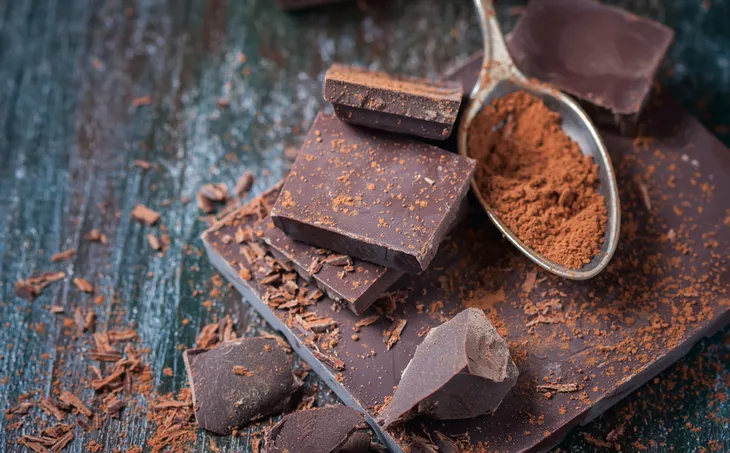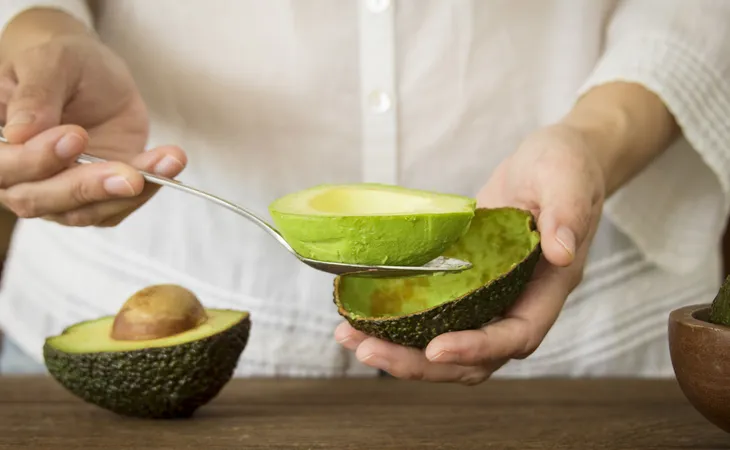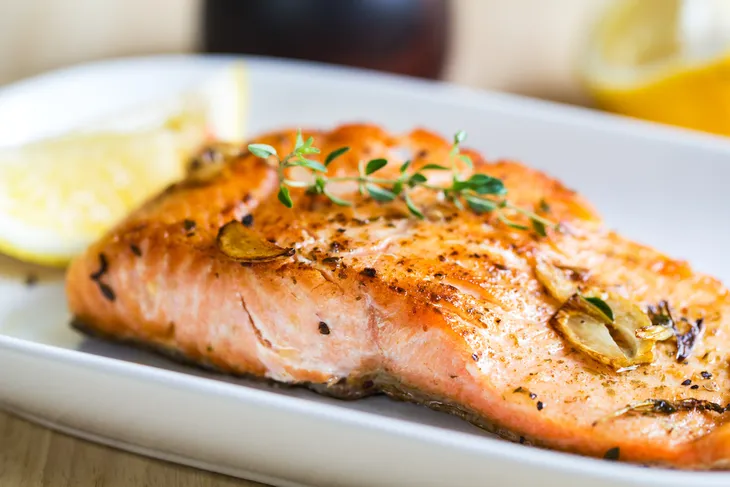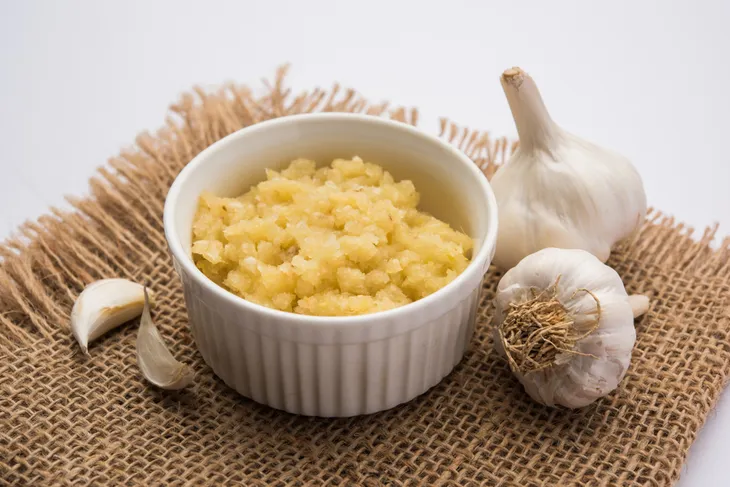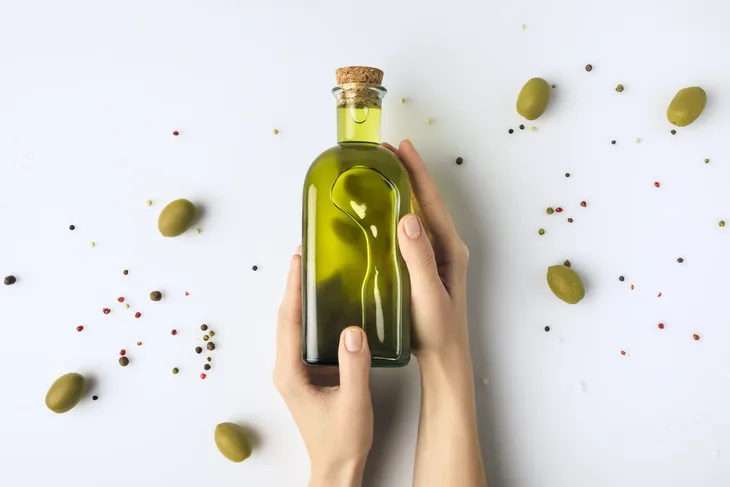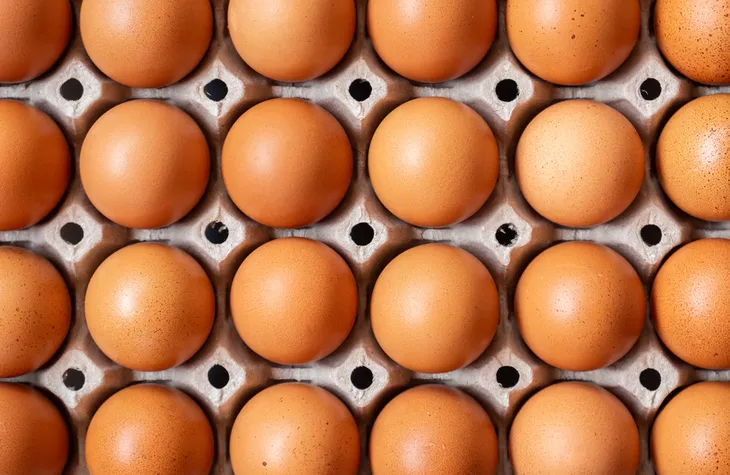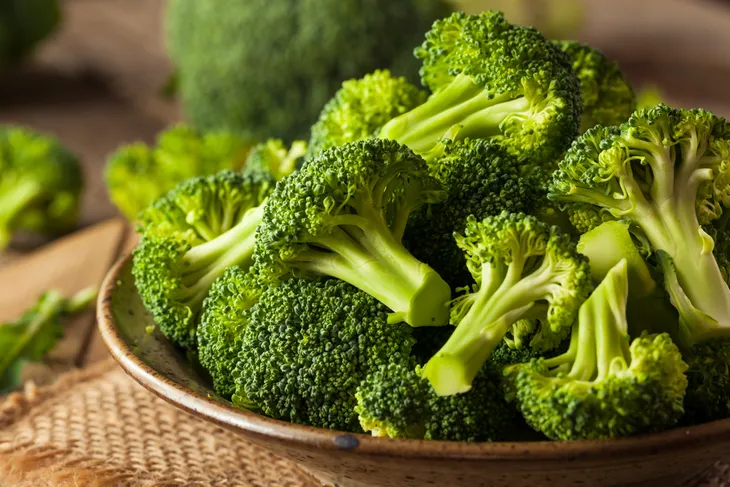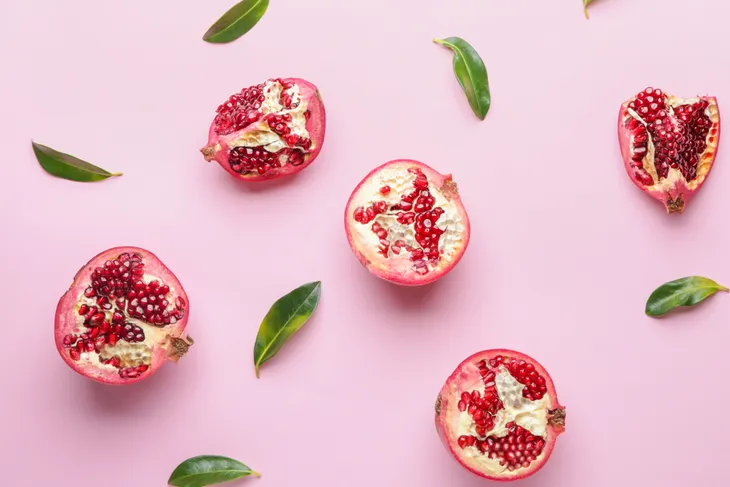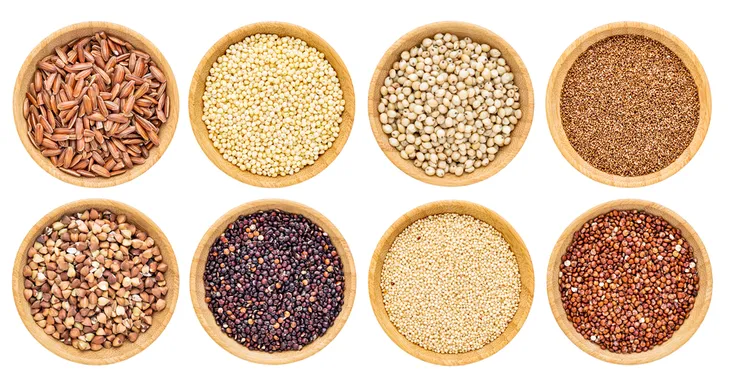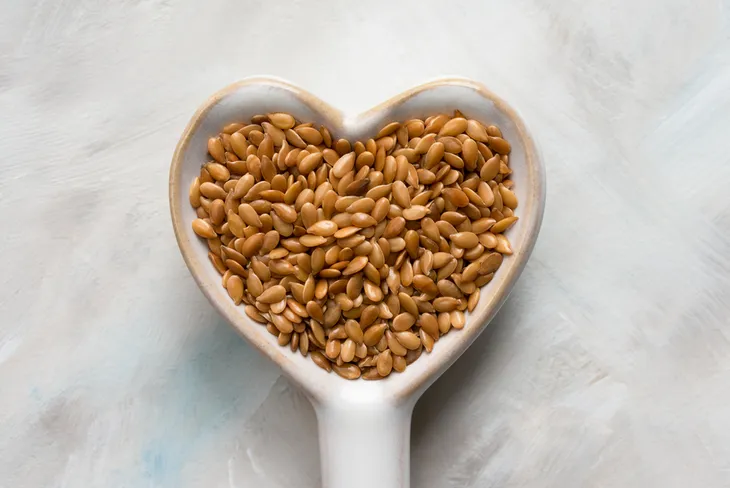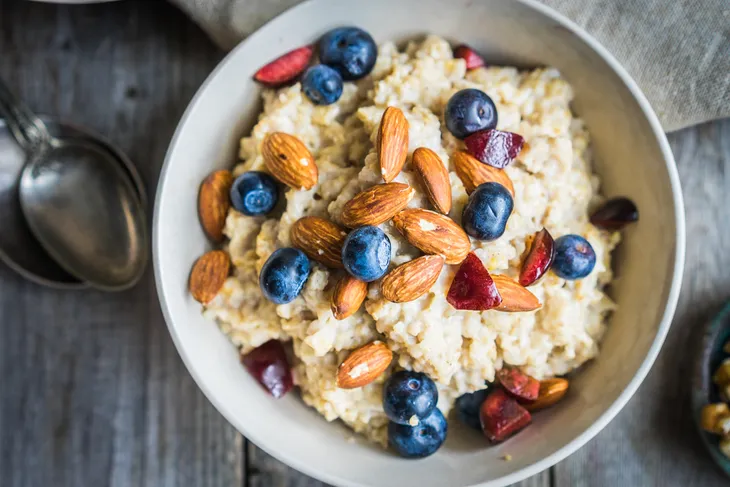Hypertension, more popularly known as high blood pressure, affects millions of Americans. It’s a persistent problem that only seems to get worse with growing access to highly processed, high-fat, and high-salt fast foods.
The good news is that there are many healthy foods that can help us bring down our blood pressure levels and overcome hypertension. So, don’t despair if your doctor tells you your blood pressure is too high—just look for these foods at your local grocery store…
Want diet & nutrition content delivered straight to your inbox? Sign up for our exclusive diet & nutrition newsletter!
Blueberries
Blueberries aren’t just a delicious, sweet addition to your morning cereal or fruit salad—they also contain lots of antioxidants that can help in the fight against serious illnesses, including cancer. EatThis.com notes that these little berries are “low-glycemic, high in fiber, and loaded with resveratrol, which a study published in Hypertension Research has found effective at reducing blood pressure in animal test subjects.”
But that’s not all! Blueberries, along with raspberries and strawberries, also contain anthocyanin which has been shown to help in the fight against hypertension. In fact, studies have shown that fruits containing anthocyanin help people with hypertension significantly lower their blood pressure levels.
Sweet Potatoes
The sweet potato is one of the most durable and—when prepared correctly—delicious and healthy foods in the world. Potatoes are packed with potassium and magnesium, according to the American Heart Association, minerals that can help in the fight against hypertension.
Many older adults fail to get enough of these minerals (particularly magnesium) in their diets, compounding the problems associated with high blood pressure. “If you have diabetes, be careful of how often and how much potato you have because it can cause elevated sugars. Sweet potatoes are the best option because they are packed with nutrients,” says Julie Ching, a dietitian and certified diabetes educator. So, next time you’re looking for a healthy side, bake a sweet potato (just keep the butter to a minimum)!
Dairy
Most of us begin our lives with steady and consistent access to milk—first, through our mothers, and later, through cow’s milk purchased at the local grocery store. Unfortunately, too many of us cut back our dairy consumption as we get older and this can be a problem for people with hypertension.
For a long time milk was touted as the best source of calcium, especially for growing kids. Not only that, but it’s also low in fat. Studies have shown that individuals who consume lots of high-calcium and low-fat dairy products (i.e., yogurt to cottage cheese and skim milk) significantly reduced their risk of developing high blood pressure.
Cereal
Studies, like this one from WebMD, show that a diet featuring high-fibre, whole-grain foods can help lower cholesterol and reduce the health consequences of hypertension. Cereal is a great way to get that fiber.
Of course, the key is finding a high-fiber cereal. Many types of cereal contain lots of sugar, but very little fiber. Make sure to check the nutritional information before taking that box of cereal home with you.
Beets
Beets: you either love them or you hate them. Regardless of your stance, there’s no denying that beets are great for lowering blood pressure and the health threats associated with hypertension. So how does it work? Healthline points out that the nitric oxide in beets is what helps lower blood pressure by opening the blood vessels. “Researchers also found that the nitrates in beetroot juice lowered research participants’ blood pressure within just 24 hours,” says the source.
In fact, a recent Queen Mary University of London study published by an American Heart Association journal showed that the nitrate found in beet juice can have a direct and significant effect on blood pressure.
Dark Chocolate
Rarely will doctors recommend their patients eat candy bars, but that’s actually the case when it comes to dark chocolate. You see, the flavonoids in dark chocolate can help to lower blood pressure, making this a very healthy snack for people struggling with hypertension.
Of course, this shouldn’t be seen as a blank cheque to go eating copious amounts of chocolate. Also, the flavonoids that do the good work are really only found in dark chocolate and not the (arguably) more popular milk chocolate. “The general recommendation is no more than 1 to 2-ounces (30 to 60-grams) as a serving size, anything more would be excessive,” says Ching.
Bananas
A key part of reducing blood pressure involves stepping up the intake of potassium. And what readily available and affordable food contains loads of potassium? Bananas, of course.
Of course, it’s important to recognize that bananas do contain a significant amount of (natural) sugar and calories, so don’t over-indulge in them. Try adding banana slices to your morning cereal or eating one as dessert after a meal.
Avocado
Avocados are all the rage, what with the healthy monounsaturated fats packed underneath their thin outer skin. And no wonder, research has shown that a diet high in this type of fat can help lower blood pressure and reduce the health risks associated with hypertension.
Avocados make an excellent addition to just about any kind of savoury dish, from sandwiches to salads. They are also excellent in making things like dark chocolate avocado pudding. Given their creamy texture (at least, when they’re ripe), avocados could also be a substitute for mayonnaise.
Fatty Fish
We’re often recommended to eat lean proteins to reduce the amount of fat we consume in our diets. When it comes to reducing hypertension, it’s actually the opposite – in terms of fish! An article published in the journal Hypertension, Fatty fish like salmon and mackerel are rich in omega-3 fatty acids which have been shown to reduce diastolic and systolic blood pressure in people who are overweight or obese who consume these types of fish twice times a week.
Omega-3 fatty acids can reduce inflammation and lower triglycerides. You can also take omega-3 supplements but it’s always best to consume nutrients naturally in food.
Garlic
Research has shown that garlic is a great food that you can eat to naturally reduce blood pressure if you suffer from hypertension. This is because garlic contains allicin, a sulphur compound that forms from being crushed, chopped or chewed, which assists in lowering supine systolic blood pressure and mean supine diastolic blood pressure. However, to obtain the blood pressure lowering benefits of garlic, it must be eaten raw.
Garlic is a great way to add flavour to your meal! Add some crushed up or minced garlic to oil and vinegar in a salad dressing, or with some cut up tomatoes in a fresh salsa.
Olive Oil
A great addition to your diet that will assist in lowering blood pressure is olive oil, specifically extra virgin olive oil. Oils and fats are essential to cooking and to our daily diet so if you’re not already cooking with olive oil, it’s an easy switch to make!
A study published in the Clinical Nutrition Journal concluded that virgin olive oil helped reduce hypertension in elderly people. The studied showed that virgin olive oil reduced LDL cholesterol and reduced the systolic pressure of hypertensive patients. Olive oil, like the majority of healthy fats, stabilizes blood sugar levels. It also consists of polyphenols, the antioxidants responsible for dropping blood pressure in people with hypertension.
Eggs
Reader’s Digest reports that a study performed by the American Chemical Society found that egg whites have the ability to actually lower blood pressure and that contrary to popular belief, egg yolks do not raise the risk of heart disease. The study examined the effect of eggs in rats by feeding them the same protein found in egg whites. Their findings show that the effect of egg whites on blood pressure is comparable to a low dose of a medication for lowering blood pressure. There still needs to be more research on the subject, but luckily eggs are also a good source of nutrients, protein and vitamin D, so don’t shy away from this tasty breakfast food!
Nuts and Seeds
Nuts, seeds, and legumes play an important role in a well-rounded healthy diet. Not only do they have great nutritional value with lots of healthy unsaturated fats, proteins, vitamins, and minerals, but “regular consumption of nuts is linked to lower levels of LDL (bad) cholesterol and total cholesterol in the blood,” says Beth Meertens, accredited practicing dietitian and Heart Foundation Spokesperson.
The Heart Foundation recommends including unsalted nuts and seeds in at least one meal every day. Nuts are unhealthy in large amounts, so keep each serving at about 30-g, or rather a small handful.
Broccoli
Broccoli might not be everyone’s favorite vegetable, but there’s no denying it’s amazing health benefits. Reader’s Digest explains just why this cruciferous veggie is not only great for our overall health, but how it plays an important role in lowering blood pressure. Broccoli has loads of minerals like magnesium, potassium, and calcium that do all the work for us. According to Prevention, one cup of cooked broccoli contains a good chunk of our daily recommended serving of the following nutrients: 6-percent of calcium, 8-percent of magnesium, and 14-percent of the potassium needed each day.
Reader’s Digest says, “Broccoli sprouts are high in compounds that may help reduce damage to arteries, which may play a role in the high blood pressure.” The source also notes that previous research on animals has proved that eating a high diet of broccoli sprouts can reduce blood pressure, cardiovascular disease, and stroke.
Pomegranate
Pomegranates are a fruit that is often overlooked, probably because many people are intimidated by how unusual and unique they are. But skipping over this fruit in the grocery store would be a mistake! Pomegranates are super healthy. You can enjoy them either on their own in their raw state, or as a juice! To back up the claim of how healthy they are, Healthline cites a 2012 study which looked at how pomegranate juice affects pulse wave velocity, blood pressure, and plasma antioxidant status. For the study, 51 healthy adults drank one cup of pomegranate juice a day for four weeks and the results showed a “significant fall in systolic blood pressure, diastolic blood pressure and mean arterial pressure.”
Whole Grains
We are told over and over that bread is bad for us. This is only somewhat true. White bread lacks any nutritional value, but whole grains can still play an important role in a healthy diet. We don’t encourage eating lots of bread and pasta at every meal, but a moderate amount on a regular basis can be beneficial. What’s important to keep in mind is everything in moderation, portion size control, and eat lots of fruits and veggies.
The Heart Foundation assures us that regular consumption of whole grains is good for the heart and works to lower the risk of blood pressure. “…whole grains appears to improve health include reducing blood glucose levels and blood cholesterol levels (total cholesterol and LDL-cholesterol), lowering body fat percentage and increasing intake of minerals, antioxidants and fibre,” says Heart Foundation Spokesperson for Nutrition Beth Thomas. The Heart Foundation also gives a list of some whole grains to try: whole grain bread, pasta, brown rice, or breakfasts that are high in fibre like cereal, rolled oats, or untoasted muesli.
Flaxseed
Flaxseed may be small, but their effect on blood pressure can be HUGE. A 2013 study published in the journal of Hypertension gathered up several participants with high blood pressure and peripheral artery disease and had them eat flaxseed on a regular basis to recorded the results. The found that after eating 30-grams (about an ounce) of milled flaxseed every day for six months, “their systolic blood pressure (the top number) went down by 15-mm Hg, on average, and their diastolic blood pressure (the bottom number) dropped by 7 mm Hg,” writes Reader’s Digest.
EatThis.com also notes that flaxseed is a good source of fiber and omega-3 fatty acids both of which help to reduce inflammation and improve the heart and circulatory system. “Research conducted at Isfahan University of Medical Sciences even reveals that individuals who added omega-3s to their diets had significantly lower systolic and diastolic blood pressure than their placebo-taking counterparts,” says the source.
Oatmeal
Breakfast is the most important meals of the day and oatmeal is a great way to enjoy it! When talking about oatmeals benefits, we usually mention it’s high fiber content, but there are other reasons! Healthline points out that it’s also good for lowering blood pressure. Not only is it high-fiber, it’s also low-fat and low sodium.
You don’t have to enjoy this breakfast food as a hot meal either, it can also be used to create what’s called “overnight oats.” “To make them, soak ½-cup of rolled oats (preferably steel cut oats), ½-cup of milk (any milk of your choice) and 1-tablespoon of low fat greek yogurt in a jar. In the morning, stir (add fruit if desired) and then heat it up to enjoy,” says Ching.

